STEPS AND SPIKES: TRACKING YOURSELF
Cities shape the way we move. Tracking your own movements using the Moves App and mapping the results using Rhinoceros & Grasshopper is a method of “working backwards” to see the city in a new light.
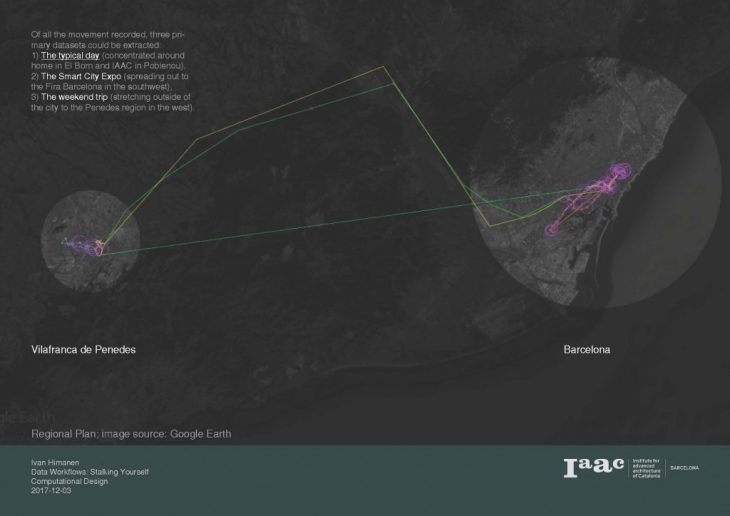
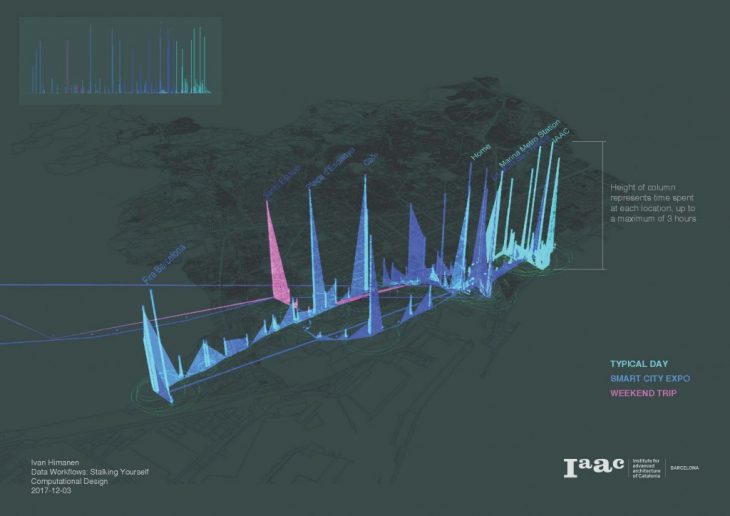
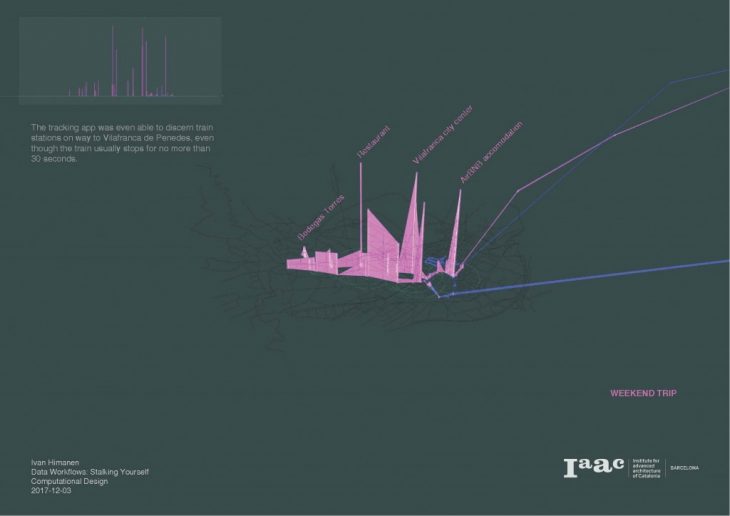
Of all the movement recorded, I chose to sort the data into three groups:
- The typical day (between home and IAAC);
- The Smart City Expo (at the Fira Barcelona in the southwest);
- The weekend trip (stretching outside of the city to the Penedès region in the west).
As seen in the plan (below), most of my movement is concentrated around the data from a typical day, whose data constituted approximately 75% of all recorded movements. My daily walk is virtually a straight line; it is visible in plan as a string of small points connecting the eastern part of El Born where my apartment is, and Poblenou where IAAC is.
The height of the columns in the 3D views represents the time spent in each location, up to a maximum of 3 hours. The underlying .kml files contain automatically-calculated duration at each tracking point (example below):
<![CDATA[<p>10/21/17<br/> 6:48 PM to 7:07 PM<br/> 18 min</p>]]>
The task in Grasshopper is then to isolate that number and link it to the radius of a circle generated at each tracking point.
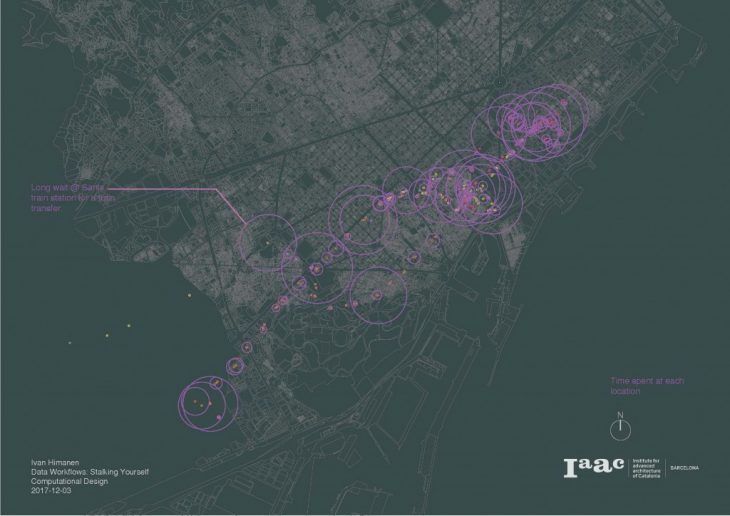
How does the Moves App work? Using Newton’s Laws of Motion. Every smartphone contains an accelerometer which detects changes in its own velocity. The greater the change, the more accurate the data collected. It was delightful to see the app discerning stations on the train ride to Vilafranca de Penedès, even though the train usually stops for no more than 20 seconds. It is easier to detect a deceleration from 200 km/h (a conservative estimate of the speed of the Renfe train) to zero than from 6 km/h (the average human walking speed). At the same time, there are spikes at the major train terminals (Estacio de França, Sants, and Vilafranca) where I had to wait up to 30 minutes for a transfer.
The primary “axis” of movement is parallel to the shore– I like to think that the main reason for this are the natural contours of Barcelona. As Newton’s First Law of Motion implies, a moving body will take the path of least resistance (that is, follow the contours of the land) instead of expending more energy walking up and down hills. The layout of the Cerdà grid and the orientation of Gran Via de les Corts Catalanes reflects this as well.
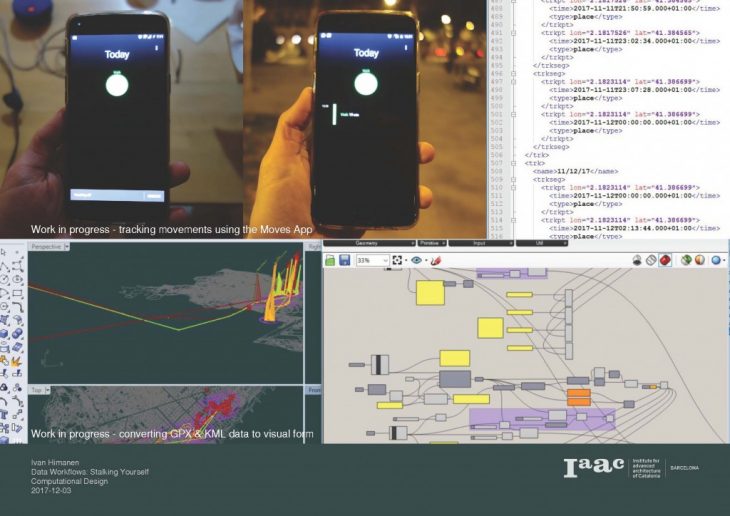
https://moves-app.com/
Steps and Spikes is a project of IAAC, Institute for Advanced Architecture of Catalonia, developed at MaCT (Master in City & Technology),
2017-18 by:
Students: Ivan Himanen
Faculty: Rodrigo Aguirre